How do I water succulents correctly? Experts reveal the best method
Knowing how to water succulents is key if you want to keep these popular plants happy and healthy
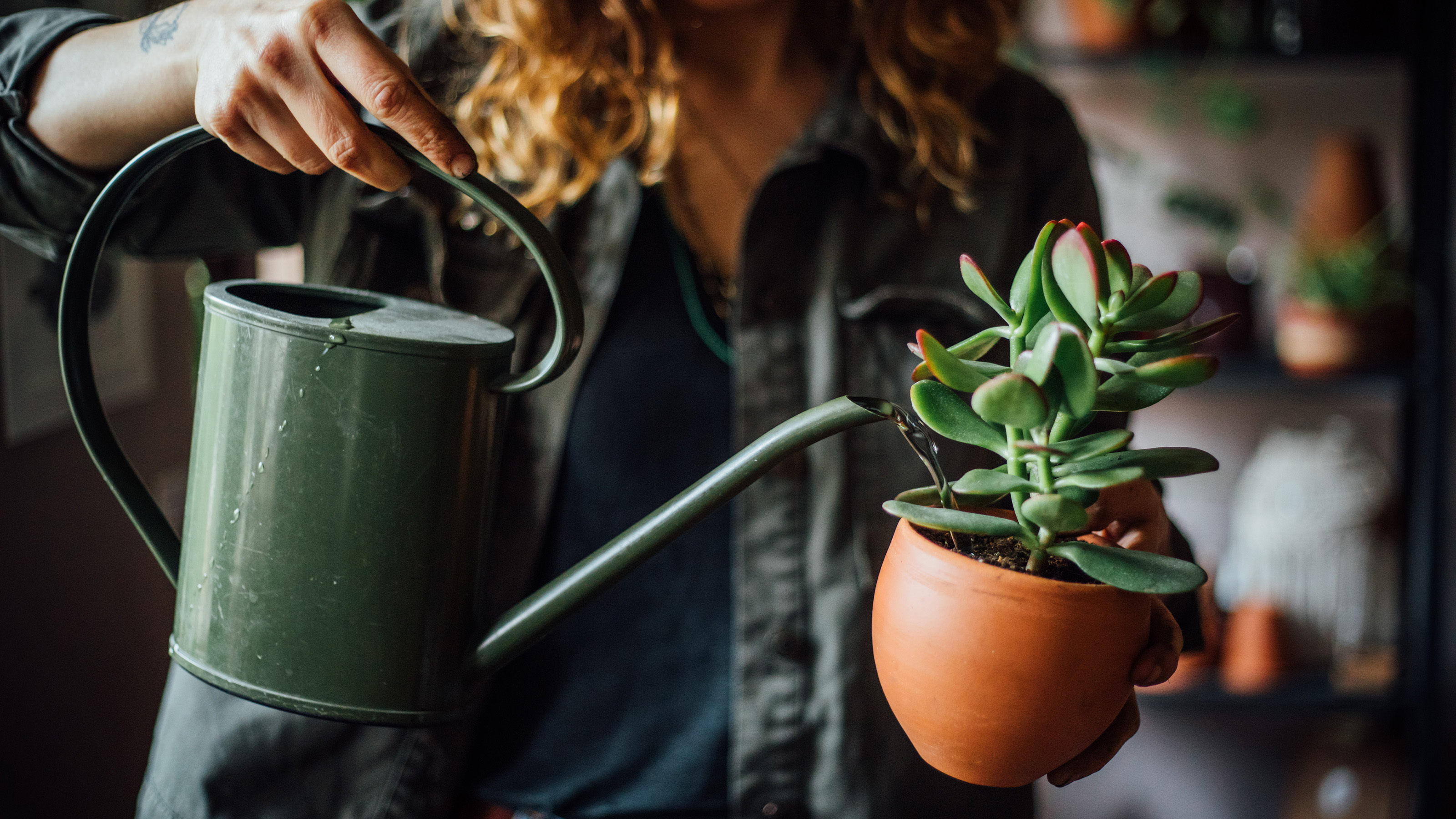

Knowing how to water succulents is helped by understanding their natural habitat. Many succulents originate from areas of low rainfall, where other plant life may be scarce.
They have adapted themselves to these conditions by being slow-growing and conserving enough moisture to keep them alive over long periods of drought. This water is stored in either fleshy roots, stems or leaves,
The thick fleshy leaves, which have a juicy quality when cut into, are attributes which make it easy to identify a succulent. Despite the succulent kingdom being an incredible mix of shapes, colors and textures.
But even with the huge variation in succulent species, knowing how to grow succulents by using the right watering technique is fairly standard across all varieties.
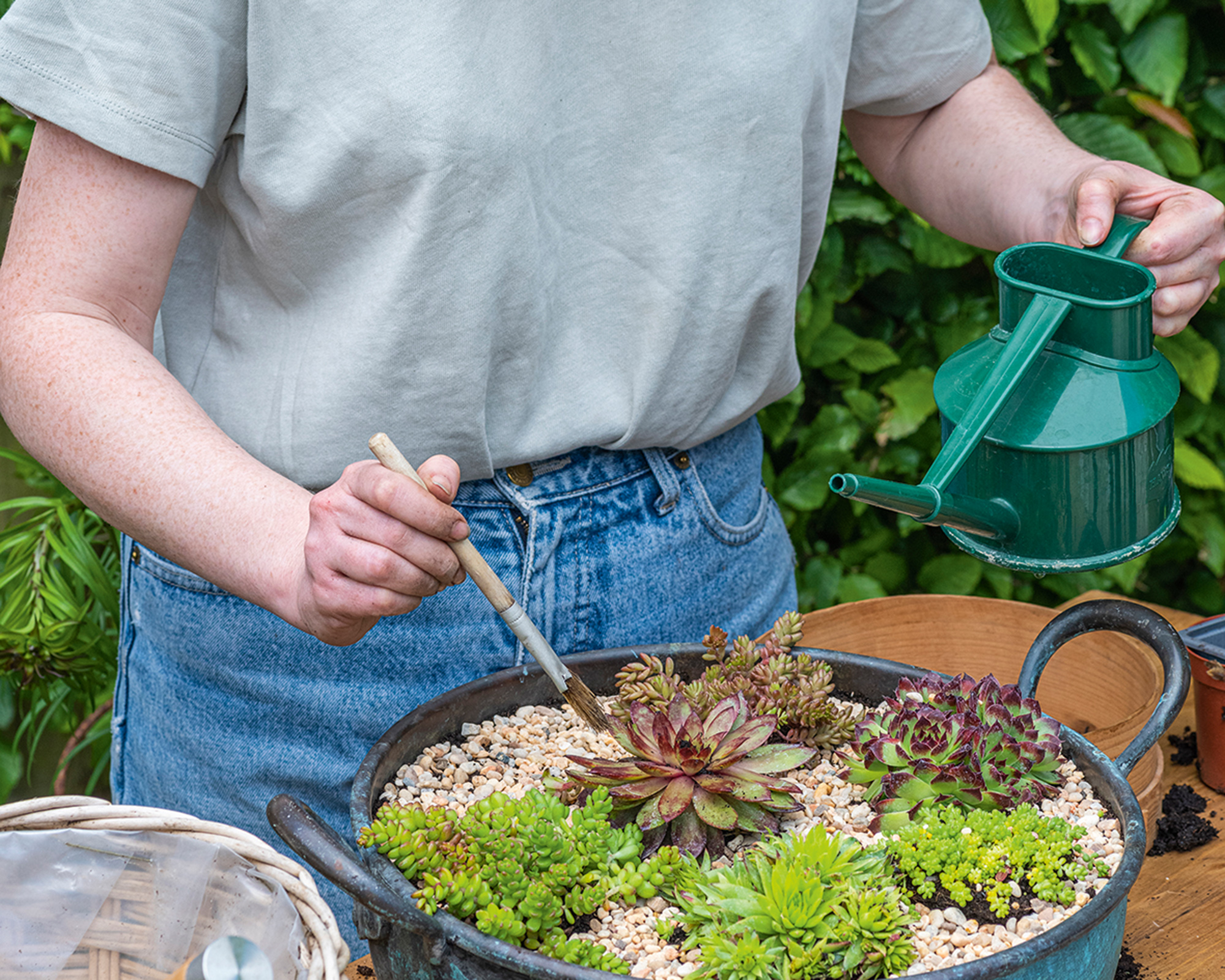
Use a small paintbrush to brush away any water droplets which have collected on leaves
7 simple tips for how to water succulents
'The best outdoor and indoor succulents are robust plants that are easy to care for and require very little maintenance, meaning they’re great for everyone, from beginners to seasoned gardeners alike,' says Dobbies’ Senior Houseplant Buyer, Claire Bishop.
- Water from the top: 'The best way to water plants in your succulent garden is to soak the soil completely from the top and let it dry out before watering again,' says Claire Bishop.
- Read the signs: 'Check the soil regularly as the period between watering will be shorter during hot weather,' says Nicola Stocken, freelance garden writer for Woman's Weekly. 'If the leaves are looking shrivelled then they aren’t getting enough water, whereas translucent leaves indicate overwatering.'
- Use shallow pots: Don’t grow in pots that are too deep or big for the size of plant because the compost will not fully dry out between waterings.
- Ensure good drainage: 'Succulents don’t like sitting in wet soil, so make sure you use a well-draining potting mix, and ensure the top layer is dry to the touch before watering plants again. A pot with drainage holes will also help ensure you don’t overwater your succulents,' advises Claire.
- Avoid the leaves: If your succulents receive sunlight, ensure that you don't leave water droplets on the their leaves when watering, as this can lead to their fleshy leaves being scorched by the sun's rays. Not to mention, leaves which are left to hang in wet soil can quickly rot.
- Use a narrow spout: A watering can with a narrow spout will enable you to be more precise with your watering and stop too much moisture collecting in the leaves.
- Keep it regular: 'Watering should be done regularly, as and when needed. Get to know how much they need by lifting the container to see how heavy it is,' says Steve Bradley, writer for Amateur Gardening. 'A container in direct sun will need more water than one in part shade, but avoid overwatering plants and leaving them too wet.'
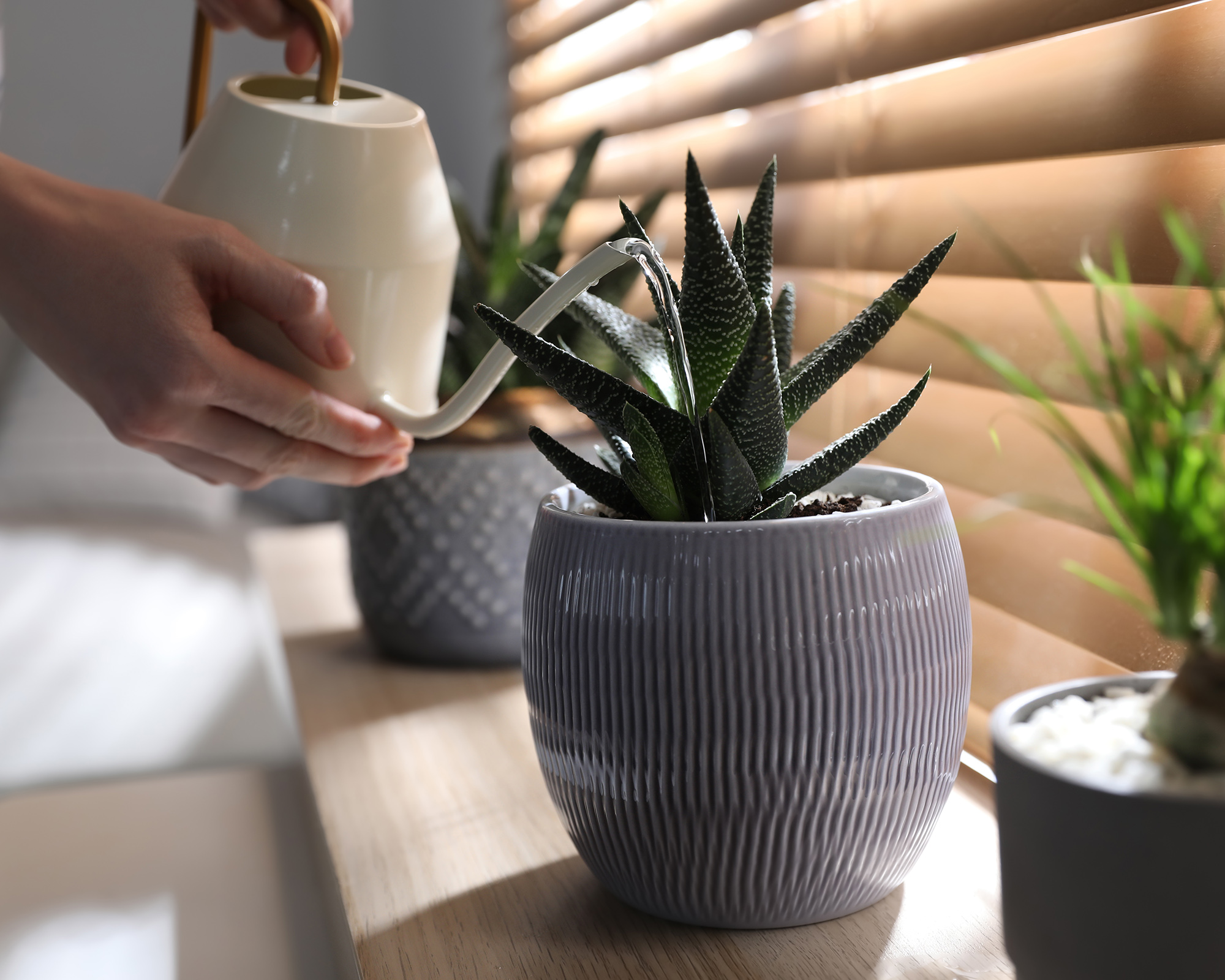
The best way to water succulents is from the top of the plant
When to water succulents
During the main growing period which spans throughout spring and summer, water your succulents every 4 to 14 days. During particularly hot spells this should be increased, as compost will dry out more quickly between waterings.
Watering can then be reduced during the cooler months of fall and you can stop altogether in winter. That is unless you are growing them in a warm region or as an indoor plant which is kept warm with central heating throughout winter. In these instances, continue to water sparingly.
One main exception are Haworthias which can be watered throughout the year.
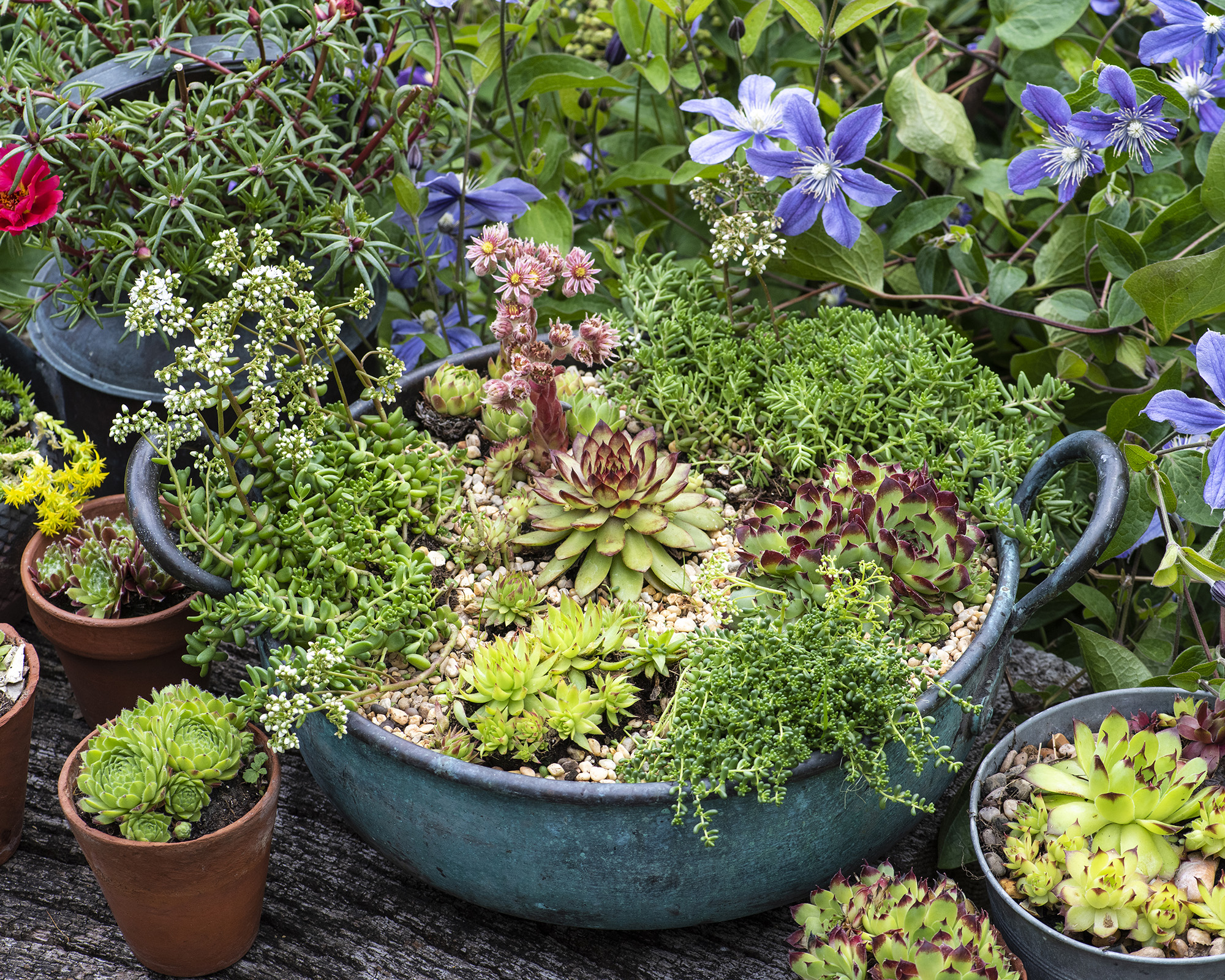
Positioning your succulents in full sun could dry them out too quickly and scorch the leaves
What is the best way to water succulents?
When it comes to how to water succulents, it’s as easy to overwater as it is to underwater. The best way to water them is to allow your container to dry out between waterings.
Do this by checking the soil regularly. Bear in mind that the period between watering will be shorter during hot weather. If the leaves are looking shrivelled then they aren’t getting enough water, whereas translucent leaves are a sign of too much watering.
Water the soil through a narrow spout from above and allow the water to drain away. Don't leave your succulent sitting in waterlogged soil in your garden planter as this will cause succulents to rot.
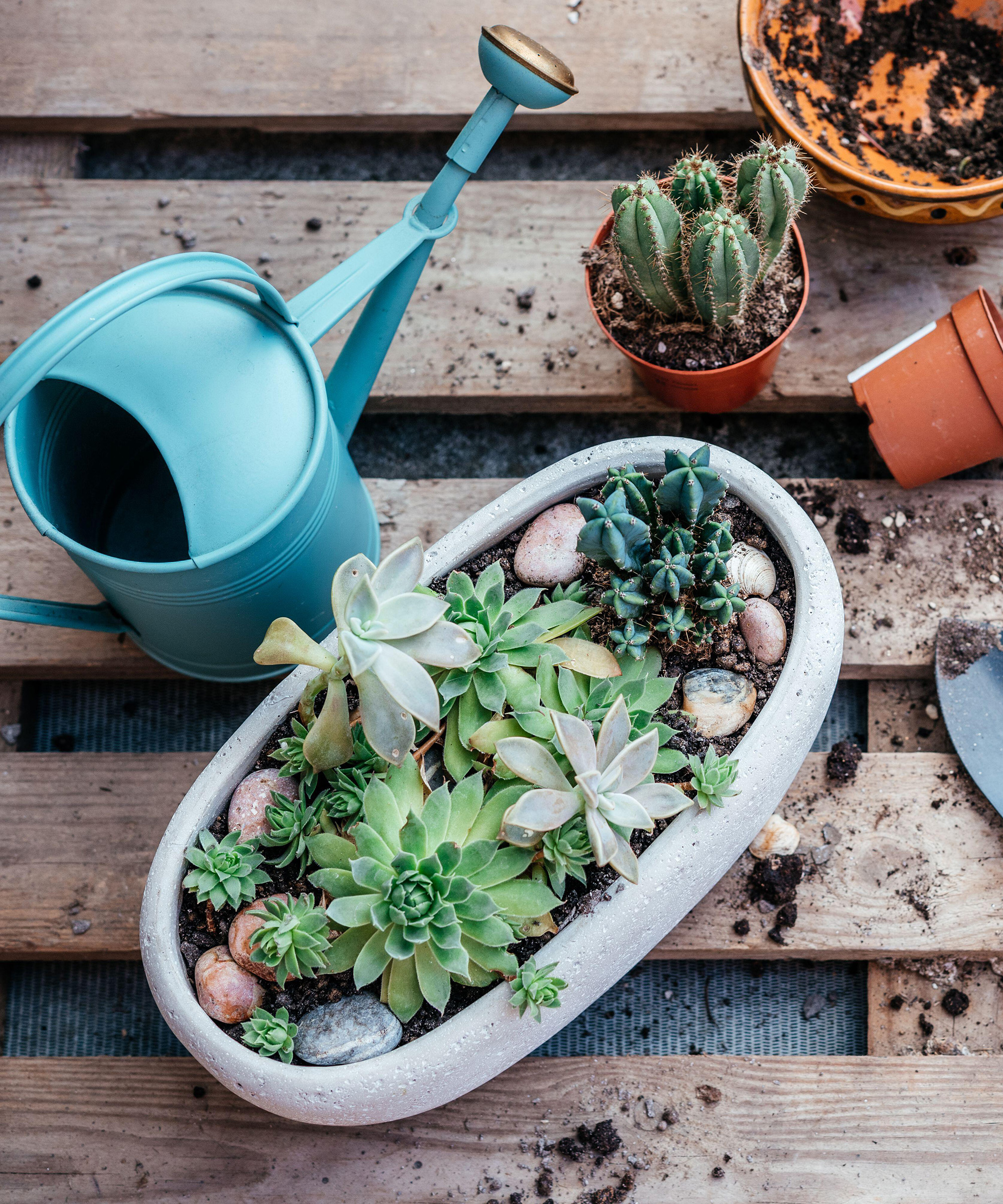
Don't plant succulents in a container that is too deep as the compost won't dry out between waterings

Teresa has worked as an Editor on a number of gardening magazines for three years now. So she is lucky enough to see and write about gardening across all sizes, budgets and abilities. She recently moved into her first home and the garden is a real project! Currently she is relishing planning her own design and planting schemes. What she is most passionate about when it comes to gardening are the positive effects it has on our mental health to grow and care for plants, as well as being great for the environment too and help provide food and shelter for wildlife.
